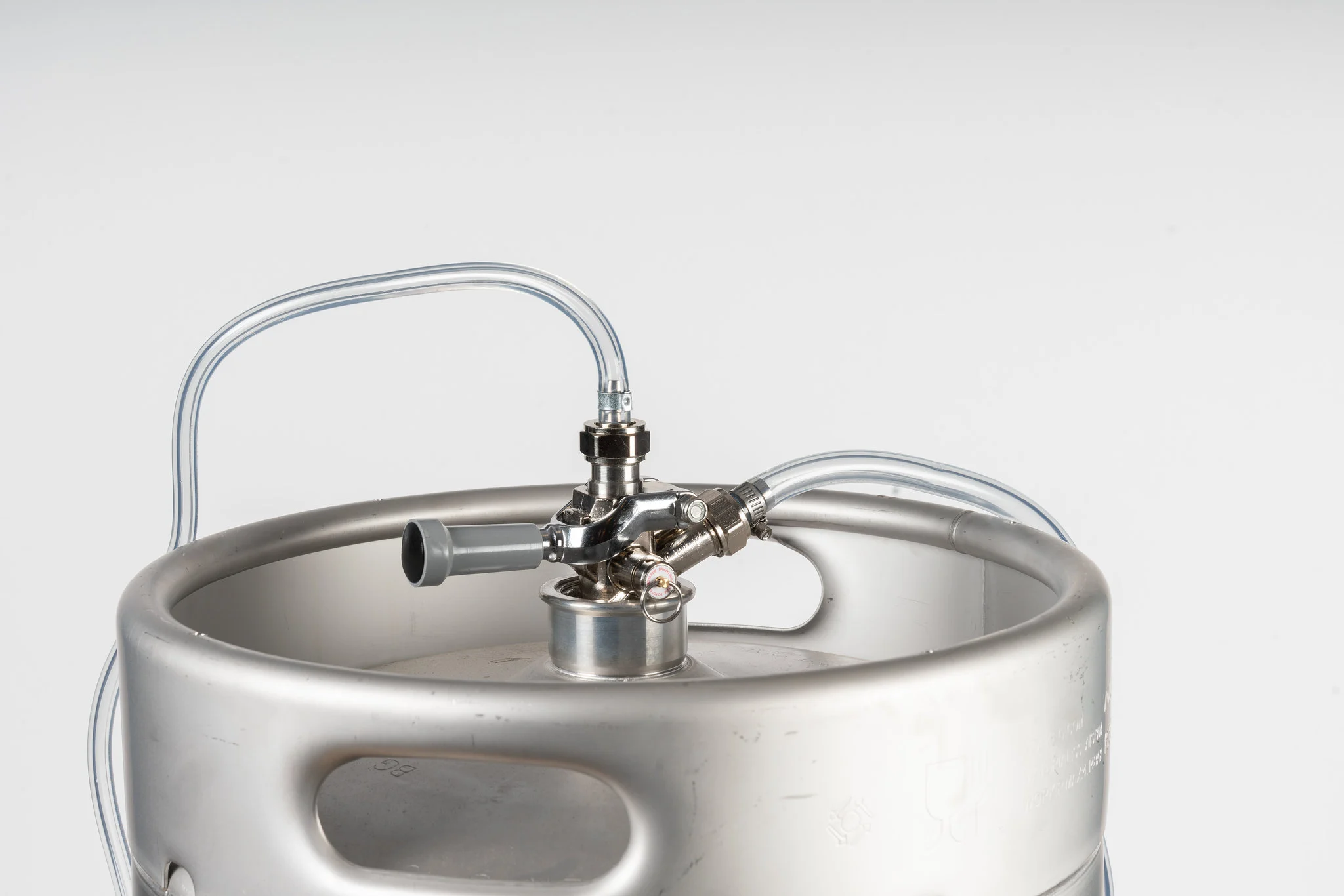

Articles
How Does Insulation Work
Modified: January 9, 2024
Learn how insulation works and its importance in articles. Find out the benefits of proper insulation and how it helps save energy and increase comfort.
(Many of the links in this article redirect to a specific reviewed product. Your purchase of these products through affiliate links helps to generate commission for Storables.com, at no extra cost. Learn more)
Introduction
Insulation is an essential component of any building, whether it’s a residential home or a commercial complex. It plays a crucial role in maintaining comfortable indoor temperatures and reducing energy consumption. But have you ever wondered how insulation actually works?
Simply put, insulation is a material that acts as a barrier to the flow of heat, helping to keep the desired temperature inside a building while preventing unwanted heat transfer. By doing so, insulation helps to create a more energy-efficient and comfortable living or working environment.
In this article, we will delve into the fascinating world of insulation, exploring how it works, the different types of insulation materials available, and the factors that affect its effectiveness. Additionally, we will discuss the benefits of proper insulation and some of the common insulation techniques used today.
Key Takeaways:
- Insulation works by impeding heat transfer through conduction, convection, and radiation, maintaining a stable indoor temperature and improving energy efficiency, comfort, and environmental impact.
- Proper insulation offers benefits such as energy savings, enhanced comfort, improved air quality, moisture control, and long-term cost savings. Selecting the right insulation material and technique is crucial for maximizing these advantages.
Read more: Who Does Insulation
Definition of Insulation
Insulation can be defined as a material or combination of materials that resist the flow of heat. It is typically installed in the walls, floors, and roofs of buildings to reduce heat transfer between the interior and exterior spaces.
The primary goal of insulation is to slow down the movement of heat, which naturally seeks to flow from warmer areas to cooler areas. By impeding this heat transfer, insulation helps to maintain a stable temperature inside the building, regardless of the weather conditions outside.
How Insulation Works
Insulation works by reducing heat transfer through three main mechanisms: conduction, convection, and radiation.
Conduction: This is the transfer of heat through direct contact between materials. Insulation materials are designed to have low thermal conductivity, which means they are poor conductors of heat. When insulation is installed between two surfaces with different temperatures, it hinders the flow of heat through conduction.
Convection: Convection refers to the transfer of heat through the movement of fluids, such as air or water. Insulation materials trap air pockets within their structure, creating a barrier that slows down convective heat transfer. This is particularly important in areas where air movement is prevalent, such as walls and attics.
Radiation: Radiation occurs when heat is emitted in the form of electromagnetic waves. Insulation materials with reflective surfaces, such as foil-faced insulation, can reflect radiant heat back towards its source, preventing it from entering the building.
By combining these three mechanisms, insulation reduces heat transfer and helps to maintain a consistent temperature inside the building.
Key Takeaways:
- Insulation works by impeding heat transfer through conduction, convection, and radiation, maintaining a stable indoor temperature and improving energy efficiency, comfort, and environmental impact.
- Proper insulation offers benefits such as energy savings, enhanced comfort, improved air quality, moisture control, and long-term cost savings. Selecting the right insulation material and technique is crucial for maximizing these advantages.
Read more: Who Does Insulation
Definition of Insulation
Insulation can be defined as any material or combination of materials that inhibits the transfer of heat, sound, or electricity. It is commonly used in buildings to regulate the flow of heat between the inside and outside environments.
The primary purpose of insulation is to reduce heat transfer, helping to maintain a comfortable and energy-efficient indoor environment. It acts as a barrier, preventing heat from escaping during cold weather and blocking heat from entering during hot weather.
Insulation materials are typically selected based on their ability to resist heat flow, measured by their thermal resistance or R-value. The higher the R-value, the better the insulation performs in slowing down heat transfer.
There are various types of insulation materials available, including but not limited to:
- Fiberglass: Made from fine glass fibers, fiberglass insulation is one of the most common and cost-effective options. It comes in the form of batts, rolls, or loose-fill.
- Cellulose: This insulation material is made from recycled paper treated with fire retardant chemicals. It is typically blown or sprayed into walls, attics, and floors.
- Spray Foam: Made by mixing chemicals that expand upon contact, spray foam insulation provides an airtight seal and offers excellent thermal resistance.
- Rigid Foam: This insulation is composed of polystyrene or polyurethane and is commonly used in applications that require high levels of insulation, such as foundation walls and roofs.
- Mineral Wool: Manufactured from natural or synthetic minerals, such as rock or slag, mineral wool insulation is known for its fire resistance and soundproofing qualities.
Insulation is typically installed in the exterior walls, floors, roofs, and attics of buildings, as well as around pipes and ductwork. It serves as a protective layer, keeping the interior spaces comfortable and reducing energy consumption.
Aside from thermal insulation, there are also other types of insulation that serve different purposes:
- Sound Insulation: Designed to reduce the transmission of sound, this type of insulation is commonly used in theaters, music studios, and residential buildings to create quieter environments.
- Electrical Insulation: Used to prevent the flow of electricity and protect against electrical shocks, this insulation is crucial in wiring and electrical equipment.
Overall, insulation plays a vital role in improving the energy efficiency, comfort, and environmental impact of buildings. It helps to reduce heating and cooling costs, minimize the carbon footprint, and create a more sustainable living or working environment.
How Insulation Works
Insulation works by slowing down the transfer of heat between the inside and outside of a building. It accomplishes this through three key mechanisms: conduction, convection, and radiation.
Conduction: Conduction is the transfer of heat through direct contact between materials. Insulation materials are designed to have low thermal conductivity, meaning they are poor conductors of heat. When insulation is installed, it blocks the direct transfer of heat between different areas, helping to maintain a stable indoor temperature.
Convection: Convection occurs when heat is transferred through the movement of fluids, such as air or water. Insulation materials trap air pockets within their structure, creating a barrier that slows down convective heat transfer. This is particularly important in areas where air movement is prevalent, such as walls and attics.
Radiation: Radiation is the transfer of heat through electromagnetic waves. Insulation materials with reflective surfaces, such as foil-faced insulation, can reflect radiant heat back towards its source, preventing it from entering the building. This helps to keep the indoor environment cooler in hot climates.
Together, these mechanisms work in harmony to reduce heat transfer and maintain a comfortable indoor temperature. Insulation essentially acts as a thermal barrier, preventing heat from escaping during the winter and blocking heat from entering during the summer.
When properly installed, insulation improves energy efficiency by reducing the need for excessive heating or cooling. It helps to create a more stable indoor environment, reducing temperature fluctuations and creating a comfortable living or working space.
In addition to thermal insulation, some types of insulation also provide other benefits:
- Soundproofing: Certain insulation materials, such as mineral wool or foam boards, have excellent sound-absorbing properties. They can help to reduce noise transmission between rooms or from external sources, creating a quieter indoor environment.
- Moisture Control: Some insulation materials, like spray foam or moisture-resistant foam boards, can provide a barrier against moisture. This helps to prevent condensation, mold growth, and water damage within the building.
Overall, insulation works by impeding the flow of heat through conduction, convection, and radiation. By slowing down heat transfer, it improves energy efficiency, promotes comfort, and provides additional benefits such as soundproofing and moisture control for buildings.
Insulation works by trapping air pockets within its material, which slows down the transfer of heat. Make sure to properly seal and insulate your home to maximize its effectiveness.
Read more: How Does A Freezer Work
Types of Insulation Materials
Insulation materials come in a wide variety of options, each with its own unique properties and suitability for different applications. Here are some of the most common types of insulation materials:
- Fiberglass: Fiberglass insulation is made from tiny glass fibers that are spun into a fluffy material. It is available in batts, rolls, or loose-fill form. Fiberglass insulation is widely used due to its affordability and good thermal resistance. It is relatively easy to install and is effective in reducing heat transfer through conduction.
- Cellulose: Cellulose insulation is made from recycled paper treated with fire retardant chemicals. It is commonly blown or sprayed into walls, attics, and roofs. Cellulose insulation provides excellent thermal performance and is environmentally friendly. It is also effective in reducing sound transmission and has good resistance to air movement.
- Spray Foam: Spray foam insulation is a liquid mixture that expands when applied, creating a solid insulation barrier. It provides an airtight seal and offers excellent thermal resistance. Spray foam insulation is suitable for hard-to-reach areas, as it conforms to irregular surfaces and fills gaps and cracks effectively.
- Rigid Foam: Rigid foam insulation is composed of polystyrene or polyurethane and is available in board or panel form. It offers high thermal resistance and has excellent moisture resistance properties. Rigid foam insulation is commonly used in applications that require high levels of insulation, such as foundation walls, roofs, and underneath siding.
- Mineral Wool: Mineral wool insulation is made from natural or synthetic minerals, such as rock or slag. It is available in batts, blankets, or loose-fill form. Mineral wool insulation is known for its excellent fire resistance and sound absorption properties. It is often used in commercial buildings, as well as in applications where fire safety is a top priority.
These are just a few examples of insulation materials, but there are many others available, including natural materials like cotton, sheep’s wool, or straw. Each type of insulation material has its own unique set of characteristics, including thermal conductivity, moisture resistance, fire resistance, and environmental impact. The choice of insulation material depends on factors such as budget, building design, desired performance, and local building codes.
It is important to consult with experts or insulation professionals to determine the most appropriate insulation material for your specific needs. They can guide you on selecting the right insulation material that will provide effective insulation while considering factors such as energy efficiency, durability, and sustainability.
Factors Affecting Insulation Effectiveness
The effectiveness of insulation in providing thermal resistance and reducing heat transfer can be influenced by several factors. Understanding these factors is crucial in selecting the right insulation material and ensuring optimal performance. Here are some of the key factors that can affect insulation effectiveness:
- Installation Quality: The installation quality of insulation plays a vital role in its effectiveness. Poorly installed insulation can leave gaps, voids, or compression, which can compromise its performance. It is important to follow manufacturer guidelines and specifications during installation to ensure proper coverage and thermal continuity.
- R-Value: The thermal resistance, also known as the R-value, indicates how well insulation resists heat flow. Higher R-values correspond to better insulation performance. It is important to consider the recommended R-value for the specific application and climate zone to achieve the desired level of thermal insulation.
- Moisture Management: Moisture can negatively impact insulation performance. Insulation materials that become wet or damp can lose their thermal resistance. Proper moisture management measures, such as installing vapor barriers or selecting moisture-resistant insulation materials, are essential to maintain the effectiveness of insulation.
- Air Leakage: Air leakage can significantly reduce the effectiveness of insulation. Uncontrolled air movement through gaps and cracks can allow heat to bypass the insulation layer. Proper air sealing measures, such as sealing gaps, caulking, weatherstripping, and using airtight insulation materials, can enhance insulation performance by reducing air infiltration.
- Compression: Compression of insulation can diminish its thickness and reduce its ability to resist heat transfer. This commonly occurs in loose-fill insulation or insulation installed in areas prone to settling. It is important to carefully select the appropriate insulation material and install it in a way that minimizes compression over time.
- Environmental Factors: Climate conditions, temperature variations, humidity levels, and exposure to UV radiation can impact the durability and performance of insulation materials. Some insulation materials may degrade or lose their effectiveness over time when exposed to certain environmental factors. Choosing insulation materials that are suitable for the specific climate and considering long-term performance is vital.
Considering these factors and taking appropriate measures can ensure that insulation performs optimally, providing the desired level of thermal resistance and energy efficiency. Consulting with insulation professionals or experts can help in selecting the right insulation material and implementing proper installation techniques to maximize insulation effectiveness.
Benefits of Proper Insulation
Proper insulation offers a range of benefits that improve energy efficiency, comfort, and environmental sustainability. Here are some of the key advantages of having well-insulated buildings:
- Energy Efficiency: One of the primary benefits of proper insulation is improved energy efficiency. Insulation reduces heat transfer, helping to keep the building cooler in summer and warmer in winter. This reduces the reliance on heating and cooling systems, leading to significant energy savings and lower utility bills. It also helps to minimize the carbon footprint and reduce greenhouse gas emissions associated with energy consumption.
- Enhanced Comfort: Proper insulation creates a more comfortable indoor environment by maintaining a stable temperature throughout the year. It minimizes temperature fluctuations, drafts, and cold spots, ensuring a consistent and pleasant living or working environment. Insulation also helps to reduce noise transmission, providing a quieter indoor space free from external disturbances.
- Improved Indoor Air Quality: Insulation can contribute to improved indoor air quality by reducing the infiltration of outdoor pollutants and allergens. It helps to create a barrier against dust, pollen, and outdoor contaminants, resulting in cleaner and healthier indoor air. Additionally, insulation minimizes the entry of outdoor moisture, preventing the growth of mold and mildew.
- Condensation and Moisture Control: Proper insulation helps to control condensation and moisture-related issues within the building. Certain insulation materials, such as spray foam or moisture-resistant insulation, create a barrier that prevents the entry and accumulation of moisture. This significantly reduces the risk of structural damage, rot, and mold growth caused by excess moisture.
- Long-Term Cost Savings: While the initial investment for insulation may vary, it offers long-term cost savings. The reduced energy consumption leads to lower heating and cooling costs over the building’s lifespan. Additionally, proper insulation helps to extend the lifespan of HVAC systems by reducing their workload and minimizing wear and tear. This results in reduced maintenance and replacement costs.
- Environmental Sustainability: Proper insulation contributes to environmental sustainability by reducing energy consumption and lowering greenhouse gas emissions. It helps to conserve natural resources and reduce the demand for fossil fuels. Additionally, insulation materials made from recycled or renewable materials can further enhance the eco-friendliness of a building.
These benefits highlight the importance of proper insulation in creating energy-efficient, comfortable, and sustainable buildings. It not only reduces energy bills and improves indoor comfort but also has positive impacts on health, air quality, and the environment.
It is essential to choose the right insulation materials, consider local climate conditions, and ensure proper installation techniques to maximize these benefits. Consulting with insulation professionals or experts can provide valuable guidance in selecting the most suitable insulation solutions for specific building needs and achieving the desired outcomes.
Common Insulation Techniques
Insulating a building involves various techniques and methods depending on the specific needs and construction of the structure. Here are some of the most common insulation techniques used in residential and commercial buildings:
- Batt Insulation: Batt insulation is a widely used and cost-effective technique. It involves installing pre-cut fiberglass or mineral wool batts between the studs, joists, or rafters of walls, floors, and ceilings. The batts fit snugly into place and provide thermal resistance by blocking heat transfer through conduction.
- Blown-In Insulation: Blown-in insulation, also known as loose-fill insulation, involves using a machine to blow loose insulation material, such as cellulose or fiberglass, into cavities or attics. This technique is particularly suitable for areas with irregular shapes or hard-to-reach spaces. The loose-fill insulation material conforms to the space, providing thermal resistance and reducing heat transfer.
- Spray Foam Insulation: Spray foam insulation is applied as a liquid that expands and solidifies into a foam. It is commonly used in areas with irregular shapes or hard-to-reach spaces. Spray foam insulation provides an airtight seal and excellent thermal resistance. It can be sprayed directly onto surfaces, filling gaps and cracks and creating a seamless insulation barrier.
- Rigid Foam Insulation: Rigid foam insulation, available in board or panel form, offers excellent insulation and moisture resistance. It is commonly used in applications such as foundation walls, roofs, and below siding. Rigid foam insulation can be cut to fit and installed in layers, providing both insulation and structural support.
- Insulating Concrete Forms (ICF): Insulating concrete forms are used in the construction of walls. They consist of hollow foam blocks or panels that are stacked and filled with concrete. The foam insulation provides thermal resistance, while the concrete provides structural support. ICF construction offers high insulation values, airtightness, and soundproofing.
- Radiant Barrier: A radiant barrier is a reflective material typically installed in attics. It works by reflecting radiant heat back towards its source, preventing it from entering the building. Radiant barriers are particularly effective in hot climates, reducing cooling costs by minimizing heat gain through the roof.
Each of these insulation techniques has its own advantages and is suitable for specific applications. It is essential to consider factors such as the building’s construction, climate conditions, budget, and desired insulation performance when selecting the appropriate insulation technique.
In addition to these techniques, it is important to ensure proper air sealing measures, such as caulking and weatherstripping, to minimize air leakage. Combining insulation with effective air sealing helps to maximize energy efficiency and maintain a comfortable indoor environment.
Consulting with insulation professionals or experts can provide valuable guidance in selecting the most suitable insulation techniques and materials for a specific building’s needs. Their expertise and knowledge will help ensure optimal insulation performance and energy efficiency.
Read more: How Does Alexa Work
Conclusion
Insulation is a fundamental component of building design, offering numerous benefits for both residential and commercial structures. Understanding how insulation works and its various aspects is essential in creating energy-efficient buildings, enhancing indoor comfort, and promoting environmental sustainability.
We explored the definition of insulation and learned that it is a material or combination of materials that resist the flow of heat. Insulation works by reducing heat transfer through conduction, convection, and radiation. By impeding the movement of heat, insulation helps to maintain a stable temperature inside buildings, regardless of external conditions.
There are different types of insulation materials available, including fiberglass, cellulose, spray foam, rigid foam, and mineral wool. Each material has unique characteristics and applications, allowing for tailored insulation solutions based on building design, budget, and desired performance.
Several factors can affect the effectiveness of insulation, such as installation quality, R-value, moisture control, air leakage, compression, and environmental factors. Proper consideration of these factors ensures optimal performance and maximizes the benefits of insulation.
The benefits of proper insulation are extensive. It improves energy efficiency by reducing heating and cooling costs, enhances comfort by creating a stable indoor temperature, and contributes to better indoor air quality. Insulation also helps with condensation and moisture control, leading to healthier living environments and minimized structural damage.
Common insulation techniques include batt insulation, blown-in insulation, spray foam insulation, rigid foam insulation, insulating concrete forms (ICF), and radiant barriers. These techniques offer flexibility and effectiveness in different applications, allowing for efficient and durable insulation solutions.
In conclusion, insulation is a vital element in building design, bringing economic, environmental, and comfort benefits. Proper insulation, combined with air sealing measures, contributes to energy efficiency, cost savings, improved indoor comfort, and reduced environmental impact. Consulting with insulation professionals can provide valuable guidance in selecting the right materials and techniques for specific building needs, ensuring optimal insulation performance and the realization of these benefits.
Frequently Asked Questions about How Does Insulation Work
Was this page helpful?
At Storables.com, we guarantee accurate and reliable information. Our content, validated by Expert Board Contributors, is crafted following stringent Editorial Policies. We're committed to providing you with well-researched, expert-backed insights for all your informational needs.














0 thoughts on “How Does Insulation Work”